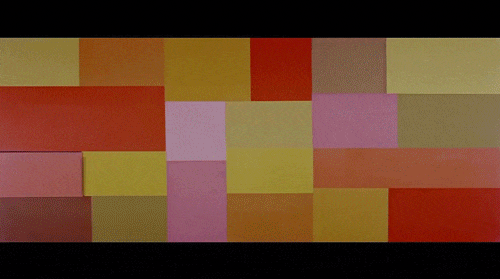Explore the history of motion graphics with us, starting with kinetic abstraction to motion graphics legends who influenced the popular culture, including Saul Bass, Oskar Fischinger, Hans Richter, and Norman McLaren.

The early history of motion graphics evolved with the general technological advances in cinema and computer industry.
With its function to engage, explain, or bring to life, motion graphics has a plethora of uses, in (non)commercial film and entertainment industry, through science, including medicine, tech, and humanities, to commercial use in marketing and branding.
History of motion graphics and the tech industry
Explained in simple terms, motion graphic is defined as a graphic design that has been brought to life through animation, but is considered to be much more than just an animated graphic design.
With the convergence of cinema, digital effects, and interactive design, motion graphics are becoming the dominant visual art form of the 21st century.
Synaesthesia and early developments
The history of motion graphics design is longer than most people would think, and it started with the early experiments in kinetic abstraction from the late 19th and early 20th century.
Among the first short films made with abstract motion graphics were those of the Futurists , which are unfortunately lost today.
The general development of this form of expression was influenced by synaesthesia, or the need to engage more senses at once through art; in particular, the seeing and hearing through the combination of music and visual art.
Creating visual music was the urge felt by many artists of the time and was one of the moving forces behind the development of Abstract art as well.
Aesthetic principles that organize the relationship between the image and music in motion graphics originated in these early experiments with abstract forms and music, made with an attempt to create a holistic piece of art.
Although the first Futurist experiments were lost, we can still get a grasp of how early motion graphic looked like, though the works of German avant-gardists such as Hans Richter, and his 1921 short film titled Rhythmus 21.
Hans Richter – Rhythmus 21
Bringing motion graphics to life
Title sequences created for feature films, television, and commercial motion graphic design began to flourish in the 1940s and 1950s, bringing fame to motion graphics as an important visual tool.
The artists such as Oskar Fischinger and Norman McLaren experimented further with cinematic techniques in their motion graphic designs.
Escaping from Europe at the brink of war, Fischinger ended up in the Disney Studios where he sometimes used images created by a wax-slicing machine, while McLaren became known as a "poet of animation" who made his creations directly onto the film roll by screeching and drawing, as can be seen in his Boogie Doodle short film from 1941.
McLaren – Boogie Doodle
Saul Bass and beyond
The recent history of motion graphics is full of innovators and creatives who shifted the course of its development and showed its visual potential.
Among them, the name of Saul Bass stands out as a name of the leading innovator in the domain of film titles.
From the 1950s onward he worked with some of the biggest names in Hollywood, such as Alfred Hitchcock, Otto Preminger, Stanley Kubrick, and Martin Scorsese.
Bass’ opening credits are considered to be the works of art in themselves, making a prelude to films, enhancing their story, and setting the tone and mood.
Saul Bass – Opening titles for North by Northwest (1959)
History of motion graphics and its significance today
In the last decades, motion graphics emerged as an indispensable part of any audiovisual project that aims to be relevant and globally recognized.
Different elements of motion design converge today into the general term of motion graphics such as broadcast design, mobile graphics, film titles, animation, UX/UI etc.
The clear distinction between motion graphics and animation is perhaps due here, as the latter is often used as an interchangeable term with animation.
Although animation shares some overlapping features with motion graphics, it also entails a complex storytelling and character development which motion graphics generally lack.
Whats next?
Today, motion graphics continues to develop, with its future being bounded up with design trends and technology.
With motion graphic design present on all digital platforms and devices, the opportunities for its development will grow in line with technological advancements of the software and hardware possibilities.
Featured image: Saul Bass - Opening Titles for Seven Year Itch via uproxx.com
Thank you for reading this article!
Back to Introbrand
